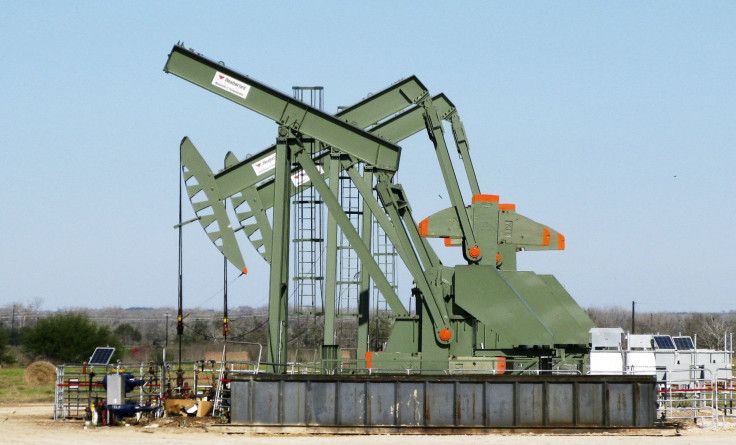The Price Of Oil Is Plunging. Here's Why

This article originally appeared on the Motley Fool.
What happened
Oil supplies in the U.S. remain stuck at elevated levels despite strong compliance by OPEC and its partners in a coordinated effort to reduce output and drain supplies. That was evident from the most recent inventory data by the U.S. Energy Information Administration, which showed that stockpiles only fell by 1.7 million barrels this week. That was once again well below the consensus estimate, with analysts anticipating a 2.7-million-barrel draw.
• Motley Fool Issues Rare Triple-Buy Alert
That softer decline caused crude prices to roll over, with the U.S. oil benchmark WTI falling more than 3% by 12:00 p.m. EDT on Wednesday and below $45 per barrel. That decline took the price of crude down 10% since the end of last month and is coming even though OPEC renewed its output reduction pledge for another nine months.
So what
One of the drivers of the market's elevated inventory level is rising output from shale plays because companies like Bakken Shale-focused drillers Whiting Petroleum (NYSE:WLL) and Oasis Petroleum (NYSE:OAS) have ramped up spending in a bid to boost output rapidly. Whiting Petroleum, for example, plans to spend $1.1 billion drilling and completing new wells this year, double what it spent last year. That capital should increase Whiting's output by a stunning 23% by the end of this year, versus where it was producing at the end of 2016. In fact, the company is already on pace to beat that guidance thanks to monster well results in the first quarter. That said, Whiting based its budget on oil averaging $55 per barrel this year, which means it's currently outspending cash flow in chasing growth. That aggressiveness in growing production appears to have come back to bite the company since its stock is down 11% today as it's getting pulled down with crude prices.
Oasis Petroleum is also down double-digits today as investors sell it off on concerns that its growth ambitions are part of the market's problem. The company ratcheted up its capital budget this year, with plans to spend $410 million on drilling and completing new wells, up from $208.4 million last year. That capital, along with a recent acquisition, has the potential to fuel 41% higher output this year. That said, with oil falling below $45 per barrel, it will affect the returns Oasis can earn on new wells since only half of its inventory is even profitable below $45 per barrel.
• This Stock Could Be Like Buying Amazon in 1997
Another big decliner on the day is troubled offshore driller Seadrill (NYSE:SDRL), which was down more than 10% in early morning trading. Plunging oil prices caused customers to cancel or adjust several contracts in recent years, while an oversupply of rigs has forced down day rates for new contracts. That has had a devastating impact on the debt-laden driller, which is why Seadrill has warned that it might have no other recourse but to seek bankruptcy protection. That outcome is growing more likely the further oil falls since it means oil companies won't increase spending on new offshore wells, reducing the need for Seadrill's rigs.
The decline of oil below $45 a barrel has also hit stronger offshore-focused companies hard today. Leading offshore driller Transocean (NYSE:RIG) and top oilfield equipment maker National Oilwell Varco (NYSE:NOV) were down more than 5% by mid-morning, making them among the biggest decliners in the S&P 500 today. That's because sub-$45 oil is too low of a price to entice most oil companies to invest more capital offshore, which will likely keep downward pressure on the market. That likely means lower rig rates for Transocean and weaker equipment sales and margins for National Oilwell Varco.
• 7 of 8 People Are Clueless About This Trillion-Dollar Market
Now what
Shale producers gambled that oil would stay above $55 per barrel this year as a result of OPEC's output cuts. Those bets led to aggressive spending increases in a bid to grow production at a brisk pace, which is now offsetting a significant portion of OPEC's efforts to drain supplies, putting downward pressure on prices. Because of that, shale-focused companies like Whiting Petroleum and Oasis Petroleum will need to rethink their 2017 growth plans since the market simply cannot handle those volumes at the moment. Until they do, these stocks could continue to sell off along with the price of crude.
Matt DiLallo owns shares of National Oilwell Varco and Seadrill. The Motley Fool owns shares of and recommends National Oilwell Varco. The Motley Fool has a disclosure policy.





















